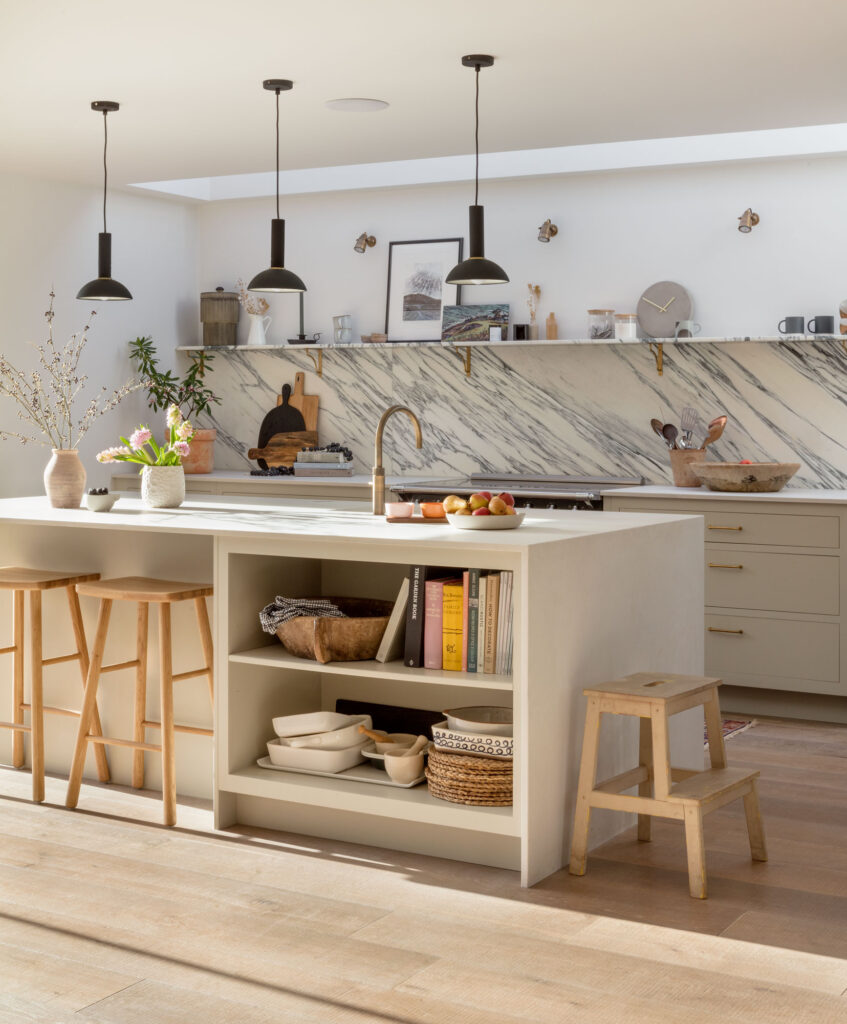
A kitchen island is more than a design feature; it’s the heart of the room.
Whether it’s where your family gathers for breakfast, friends sip wine while you cook, or little ones do their homework, the kitchen island is where everyday moments unfold.
But what exactly is a kitchen island, and is it right for your space?
In this guide, we’ll walk you through everything you need to know. From size and layout tips to the benefits and drawbacks, you’ll get practical advice and design inspiration to help you make the best decision for your home.
Let’s explore how this timeless element can elevate the way you live, cook, and connect.
What is a Kitchen Island?
A kitchen island is a freestanding unit typically positioned at the centre of the kitchen. It offers additional worktop space, storage, and can serve as a social hub for the home. Islands can be fixed or movable, significant or compact, and tailored to your unique needs.
Some islands include integrated appliances, seating areas, sinks, or wine storage. Others simply extend your prep space. At Harvey Jones, we design bespoke kitchen islands that bring both beauty and functionality into harmony.
Benefits of a Kitchen Island
1. Extra Worktop Space
Whether you’re preparing dinner or laying out snacks for a gathering, an island gives you that essential room to spread out.
2. Built-in Storage
From deep drawers for pans to hidden compartments for small appliances, your island can double as a sleek storage solution.
3. A Place to Socialise
It’s where guests perch with a glass of wine, kids do their homework, and weekend breakfasts turn into lingering conversations.
4. Design Flexibility
Choose a contrasting colour, integrate a breakfast bar, or add display shelving to express your personal style.
5. Adds Value to Your Home
A well-designed kitchen island can increase the overall appeal and resale value of your property, especially when crafted with premium materials.



Are Kitchen Islands Still On-Trend?
Absolutely. Kitchen islands remain one of the most requested features in modern home design. The key is personalisation, making your island work for your lifestyle.
At Harvey Jones, we craft islands tailored to how you cook, entertain, and live. Whether it’s a traditional shaker-style island or a sleek, handleless design with a waterfall worktop, your island should feel like a natural extension of your home.
What Should You Consider When Designing a Kitchen Island?
- Available Space: Ensure there’s enough room to move around the island (we recommend at least 1 metre clearance on all sides).
- Purpose: Will it be used for cooking, dining, entertaining, or all three?
- Storage Needs: Think beyond drawers, consider integrated bins, wine racks, or appliance garages.
- Seating: Determine how many people you want to seat comfortably and whether bar stools or built-in benches best fit your vision.
- Lighting: Pendant lights not only offer task lighting, but they also add drama and style above your island.



Harvey Jones offers bespoke kitchen islands bespoke to every design’s needs. For more inspiration, take a look at our other guide on island life and our range of luxury kitchens. Request an appointment today to discover all the possibilities for your dream island.






